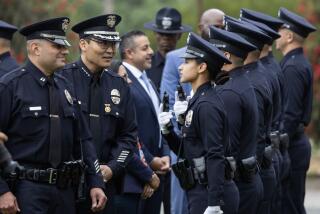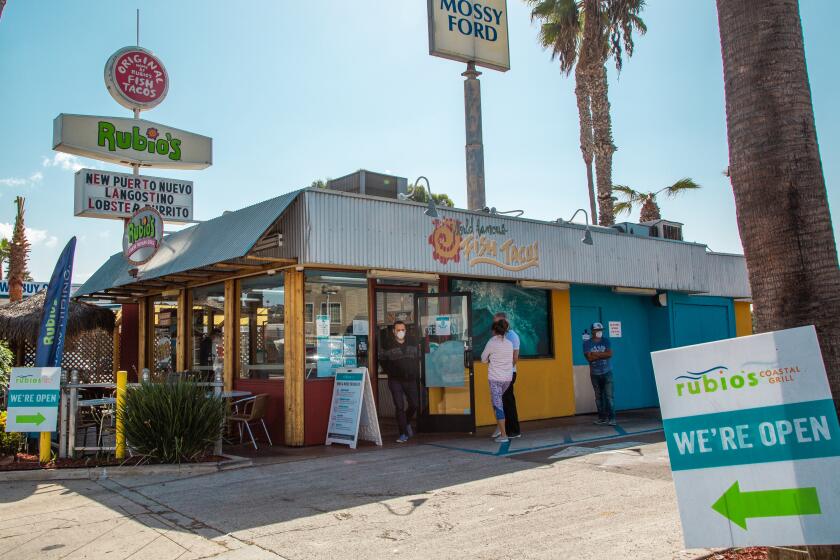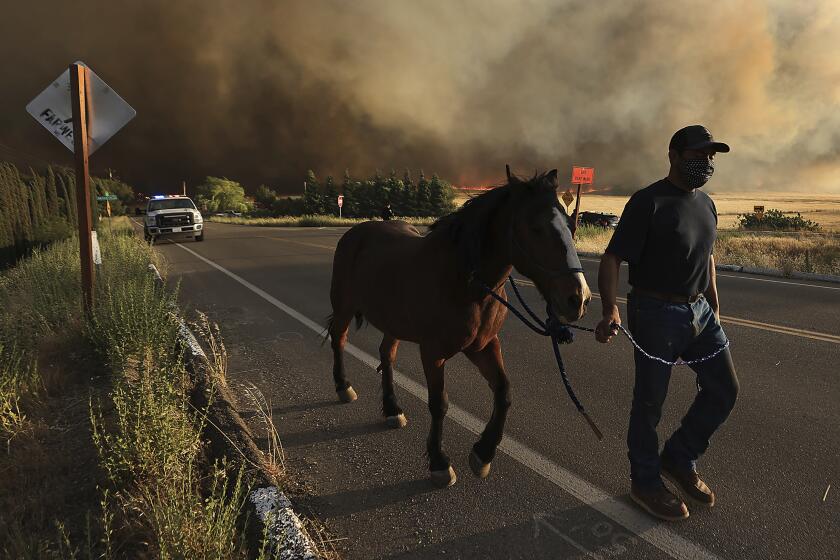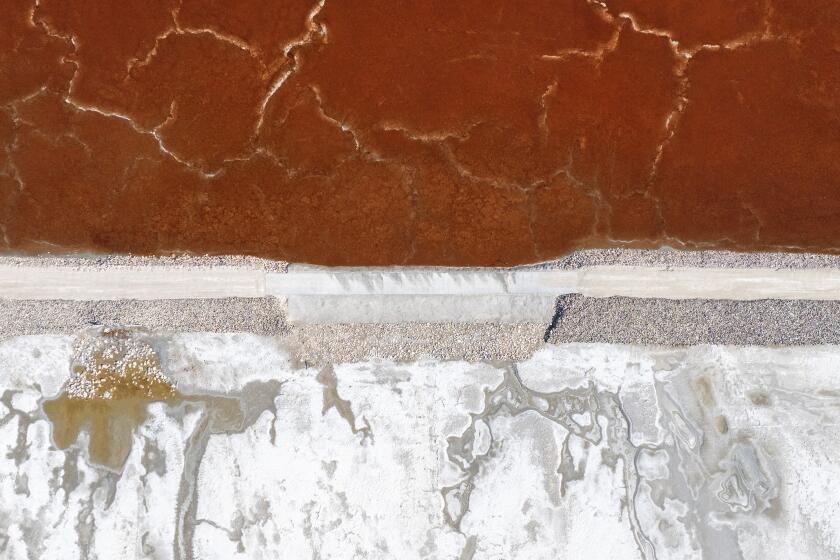Is Theft a Sign of the Times? : Landmarks: Some residents view the pilfering of peace sign in Topanga Canyon as a strike against the counterculture.
Call it a counter-counterculture encounter.
That may explain what happened to a roadside landmark that for years symbolized Los Angeles’ most eclectic community.
A giant peace sign that changed colors with the seasons and with the mood of its owner has disappeared from an oak-covered hillside above Topanga Canyon’s main road.
Somebody would not give this peace piece a chance. And quite a few mountain folks are fighting mad about it.
“That sign was one of the things that made this place different from the rest of L. A.,” grumbled construction worker Dave Nunes the other day. He was sitting in a shady spot near the center of town as he ate lunch: a peach and several slices of pita bread.
“Personally, I think kids did it.”
Michael Murphy raises organic vegetables and sells them, along with mountain crafts and tie-dyed shirts, from a converted railroad boxcar. He was wondering whether grown-ups are to blame.
“All the money coming in here is changing the place,” he shrugged. “They’re weeding out all of us longhairs. The musicians, the artists.”
If the theft was a prank, it was not funny, said Colin Penno, editor of the biweekly Topanga Messenger newspaper.
“It was a physical landmark, but it went deeper than that,” Penno said. “Stealing it was a blow to everyone here. Topanga’s changing. But there are still lingering values here that the yuppie invasion hasn’t managed to extinguish.”
Up the road, past the Inn of the Seventh Ray restaurant run by New Age cultists and beyond the tiny Crystals in the Woods rock shop, Bob Oedy was also puzzling over the sign’s disappearance.
Oedy, 29, is the man who built the plywood peace symbol. It was his salute to the laid-back friendliness of the mountain community halfway between Malibu and Woodland Hills.
As a boy growing up in the San Fernando Valley, Oedy dreamed of one day living in the canyon.
“As a kid we’d drive through here on the way to the beach. My parents were a little afraid of the hippies. But I loved it,” he said.
It was his special touch with the paintbrush that helped make the peace sign a canyon landmark.
At the Fourth of July, it became red, white and blue. At some other times it was decorated in psychedelic colors. It turned orange and black at Halloween and candy-striped red--and decorated with Christmas lights--in December. It emerged blood red during the Gulf War, when Oedy frequently uprooted it and carried it at peace marches outside the Federal Building in Westwood.
“I must have repainted it 50 times,” said Oedy, who works as an electrician on the Metro Rail subway construction project in downtown Los Angeles. Off work, he performs in two punk-rock bands, “The Grim” and “Glue Gun.”
“Maybe it was taken by college fraternity members. Or there might have been some real estate people who didn’t like it. Some people would like Topanga to be like Malibu.”
If the theft--which after four months is still being debated in the canyon--was political, it is not a first for Topanga.
In 1982, protesters destroyed a landmark “psychedelic pig”--a larger-than-life wooden oinker that for 10 years had also stood on a hillside next to the boulevard. It had exhorted passersby to “Love Animals, Don’t Eat Them.”
A canyon backhoe operator later disclosed how the pig was polished off.
“Several of my friends couldn’t stand to look at it any longer,” the man told The Times in 1983. “Topanga has always gotten a bad rap as a hippie haven and the pig sure didn’t help. So one night they got together and blew it up (with low-yield explosives).”
Topanga frequently has moved to its own beat.
Tiny cabins built after World War I as secluded weekend retreats for Los Angeles residents were rediscovered in the 1950s by the beatnik generation--devotees of jazz music, Jack Kerouac novels and Allen Ginsberg poetry.
Flower children flocked there in buses and Volkswagen vans decorated with anti-war slogans in the 1960s. For a time, an experimental community called Sandstone operated in the canyon. It encouraged open sexuality among its followers.
Elysium Fields, a combination nudist camp and behavioral science center, opened in a secluded glade, triggering a zoning dispute with Los Angeles County officials that continues 24 years later.
Million-dollar estates began popping up on Topanga ridgelines in the 1980s. But the canyon’s last major hippie commune managed to hang on until 1987, when its residents were evicted by a developer hoping to build a golf course and country club nearby.
The old Summerhill Ranch had housed up to 50 squatters, artists and others living in old campers and cabins. When deputy county marshals came to kick out the last of them, one resident conjured up the image of ancient Chumash Indians said to be buried near the commune.
“I’ve heard the spirits. On New Year’s Eve, I saw them,” the woman lectured the developer. “God willing, the project will be haunted.”
The ghosts may have heard her appeal. After a series of setbacks, developer Christopher R. Wojciechowski last year filed for bankruptcy.
This year, Wojciechowski was replaced and the construction plan was drastically pared down. The new project proposal does not include the old Summerhill Ranch land.
As for Oedy, he moved out of his tiny canyon cabin and into a Tarzana condominium this month. A nighttime encounter with a burglar at his canyon cabin had been the last straw, he said.
“The rains had washed out my driveway. Then the peace sign was stolen. And then the robber. That pretty much did it for me,” he said.
“I’m now in a condo that is painted stark white from front to back. It has a Jacuzzi and everything. It’s pretty yuppie.”
But Oedy said he already wants to return to Topanga. And he would like to erect another peace symbol.
He is ready to give the place--and peace--another chance.
More to Read
More to Read
More to Read
Start your day right
Sign up for Essential California for news, features and recommendations from the L.A. Times and beyond in your inbox six days a week.
You may occasionally receive promotional content from the Los Angeles Times.







